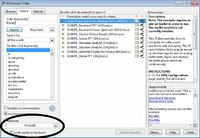cjekanem
Newbie level 3

Hi,
I'm a LabVIEW beginner and I have a school project with the subject above. On acquring my signals, I need to measure certain power parameters and disturbances. I do not know the step-by-step means to achieve this in LabVIEW. Please, please, please recommend specific books or links that can take me through this. My deadline is almost here. How can I re-download the evaluation version on my PC?
I'm a LabVIEW beginner and I have a school project with the subject above. On acquring my signals, I need to measure certain power parameters and disturbances. I do not know the step-by-step means to achieve this in LabVIEW. Please, please, please recommend specific books or links that can take me through this. My deadline is almost here. How can I re-download the evaluation version on my PC?


